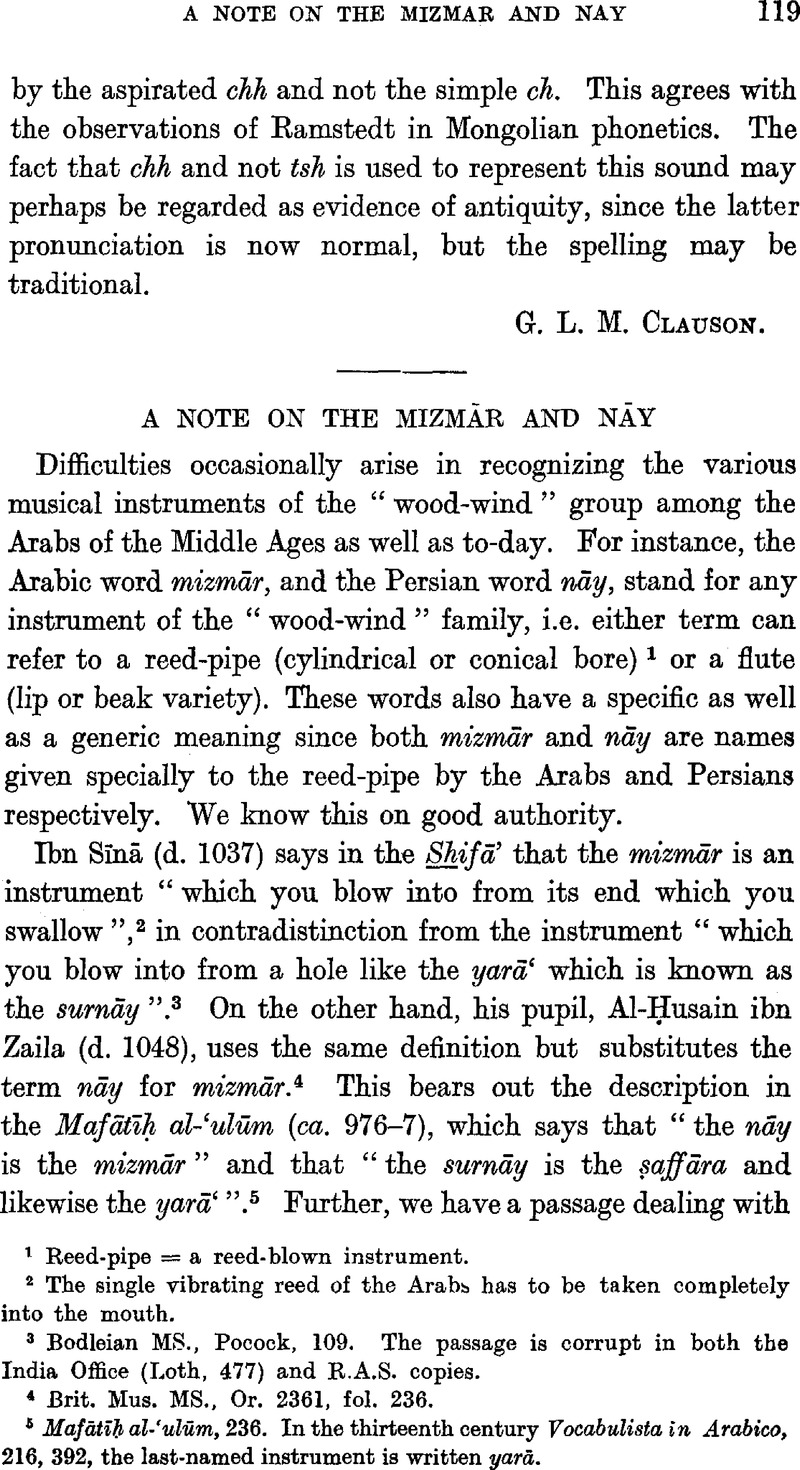No CrossRef data available.
Published online by Cambridge University Press: 15 March 2011

page 119 note 1 Reed-pipe=a reed-blown instrument.
page 119 note 2 The single vibrating reed of the Arabs has to be taken completely into the mouth.
page 119 note 3 Bodleian MS., Pocock, 109. The passage is corrupt in both the India Office (Loth, 477) and R.A.S. copies.
page 119 note 4 Brit. Mus. MS., Or. 2361, fol. 236.
page 119 note 5 Mafātīḥ al-'ulūm, 236. In the thirteenth century Vocabulista in Arabico, 216, 392, the last-named instrument is written yarā.
page 120 note 1 Bodleian MS., Pocock, 250, fol. 168.
page 120 note 2 Brit. Mus. MS., Add. 16659, fol. 341v.
page 120 note 3 Leyden MS., Or. 651, fol. 77 et seq. Kosegarten, , Lib. Cant., 95Google Scholar.
page 120 note 4 Leyden MS., Or. 651, fol. 15 et seq. Kosegarten, , Lib. Cant., 45Google Scholar.
page 120 note 5 Bombay Edit., i, 97.
page 120 note 6 Descr. de l'Égypte. État Mod., i, 954. Lane, Mod. Egypt., chap. xvii. Muḥammad, Darwīsh, ṣafā'al-awqāt (Cairo, 1328), p. 13Google Scholar. Afandī, Aḥmad, Nail al-adab fī mūmqi (Būlāq, 1320), p. 94Google Scholar.
page 120 note 7 Al-Aghānī, ii, 175. Al-Mufaḍḍaliyyāt, xvii. Lane, Lexicon, s.v.
page 120 note 8 Cf. Dozy, Suppl. Diet. Arabes, s.v.
page 120 note 9 Al-Jawālīqī. Kitāb al-muarrab.
page 121 note 1 Kanz al-tuḥaf, Brit. Mus., MS., Or. 2361, fol. 263. Ibn Ghaibī, Bodleian MS., No. 1842, fol. 79v.
page 121 note 2 Muḥammad ibn Murād Treatise, Brit. Mus. MS., Or. 2361, fol. 173v.